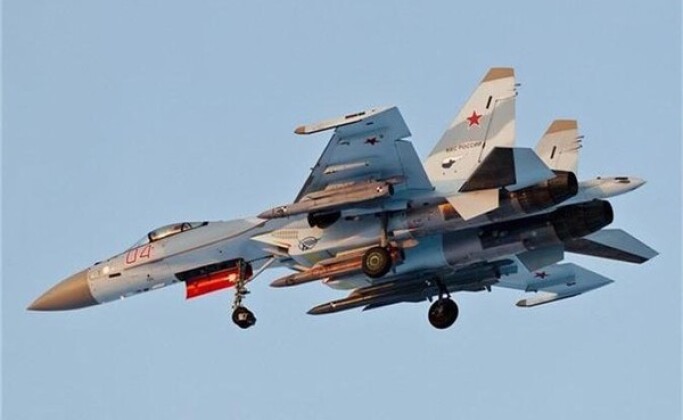News
Russian Deploying Su-35 Fighters to Seek an Destroy Targets in Ukraine
The Russian Armed Forces have relied on Su-35 fighter aircraft to seek and destroy hostile aerial and ground targets in the Ukrainian theatre, which are thought to leverage a number of the aircraft’s unique capabilities within the fleet. Commenting on these operations, the press office of the state tech firm Rostec reported: “A broad arsenal that includes various types of missiles and rockets opens up opportunities for engaging aerial and ground targets at large and medium distances. The Su-35S effectively ‘hunts down’ enemy targets in the zone of the special military operation. The aircraft is in demand in the troops and we smoothly deliver these jets to our Aerospace Forces.” The report cited the fighter’s advanced avionics and armament and its high manoeuvrability as facilitators of success on these missions..

The Su-35 is estimated to have been responsible for more air-to-air shootdowns than any other post-Cold War combat jet, with one of its most notable successes occurring in the war’s initial days on March 5, 2022, when the fighters reportedly shot down four of the Ukrainian Air Force Su-27s near the city of Zhytomir. The targets of multiple further shootdownss have included more Su-27s, as well as MiG-29s, Su-24M strike fighters, Su-25 ground attack jets, Mi-8 helicopters, and a wide range of drone types. The aircraft is not known to have suffered any losses in air-to-air combat, although at least three have been shot down by Ukrainian air defences during the three-and-a-half year period of hostilities. Although developed primarily as an air superiority fighter, the Su-35’s secondary air-to-ground capabilities have also been put to use on various strike missions, including suppression of enemy air defences.

In May the General Director of the United Aircraft Corporation Vadim Badekha revealed hat work was underway to expand production of the Su-35, both to more rapidly expand Russia’s own fleet and to meet major new foreign orders. Algeria, Iran and Ethiopia have all been confirmed since the beginning of the year to have become new clients for the aircraft. In late July it was confirmed that the Su-35 had integratedthe R-77M radar guided air-to-air missile, significantly narrowing the previously very wide gap between its beyond visual range targeting capabilities and those of top performing American and Chinese fighters. Nevertheless, the fighter’s overall capabilities remain far behind those of top performing foreign rivals such as the Chinese J-16, J-35 and J-20 and the American F-35, with its radar being less sophisticated, its airframe using less composite materials, and its data links and visual range weaponry being far from cutting edge. Russia is expected to heavily compensate for this by employing the Su-35 in a supporting role alongside networks of ground-based air defence systems.












